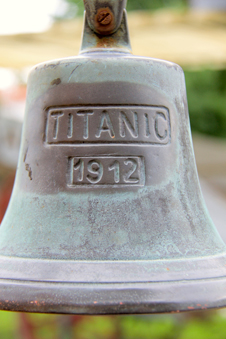3Qs: Looking back on the Titanic tragedy, 100 years later

Sunday marks the 100th anniversary of the sinking of the Titanic. After leaving Southampton, England, on April 10, 1912, the ship struck an iceberg late in the night four days later and sunk shortly thereafter. Reports say that of the more than 2,200 passengers on board, only 705 survived. Jamie Dendy, head librarian for research and instruction in University Libraries, talks about the significance of the coverage and the library’s materials from 1912.
From the 1912 news coverage of the Titanic tragedy, what can we learn about the sinking and the unique characteristics of how it was portrayed?
From looking at the old newspaper accounts of the Titanic sinking, we can see that the event was one that stunned and soon after outraged the nation and the world.
First, one needs to look at news coverage of the Titanic before the disaster. The ship was thoroughly analyzed in the press for its innovative and unique engineering, which made it unsinkable, and for its opulence, at least for its first-class passengers. Second, it is interesting to read how, after the disaster, the loss of life was portrayed. The focus was weighed heavily on the survival or loss of particular, upper-society personages.
The New York Times accounts were eventually particularly detailed, as the ship was destined for and had many passengers who were citizens of New York City. The New York Times eventually published a 10-page special section detailing the entire passage from the ship’s sailing from Great Britain to the docking of survivors in New York harbor. However, until the survivors eventually arrived in New York City, few details were available about the sinking, and the several New York City newspapers were in fierce competition to be the first to interview the arriving survivors.
Many know that the reason Titanic sank was the fact that too many of its watertight compartments flooded for it to stay afloat. One hundred years later, are there any mysteries yet to be solved in the tragedy?
Actually, there’s not much mystery surrounding the causes of the collision, though there is a new article in Sky and Telescope magazine entitled “Did the Moon Sink the Titanic?” in which researchers blame an astronomically high tide that year causing an unusual number of icebergs to float away from Greenland. Some of the continuing mysteries revolve around both what the captain and crew of the Titanic did after the collision to limit flooding and if they delayed too long in calling for help.
What materials and resources are available in University Libraries that the Northeastern community can access to learn more about the Titanic?
Snell Library has a good variety of resources on the Titanic disaster, including a surprising, unique resource. We have firsthand newspaper accounts from our collection of digital, online historical newspapers, including The Boston Globe, The New York Times and The Times of London. Second, we have books, both in print and electronic, covering all aspects of the disaster, from a cultural history of its depiction to a study of the engineering behind the ship’s design. In our digital hearings collection, we have a U.S. Senate hearing, held later in 1912 to investigate the disaster. We also have a number of novels and at least three feature films based on the Titanic’s sinking.
Our University Archives and Special Collections also includes the papers of a radio operator, Arthur Batcheller, who corresponded with the radio operator who received the distress call from the Titanic.
As more books and films are published about this unique event in our country’s history, we in Snell Library will add the relevant materials to our collections to further enhance research and leisurely reading and viewing.





